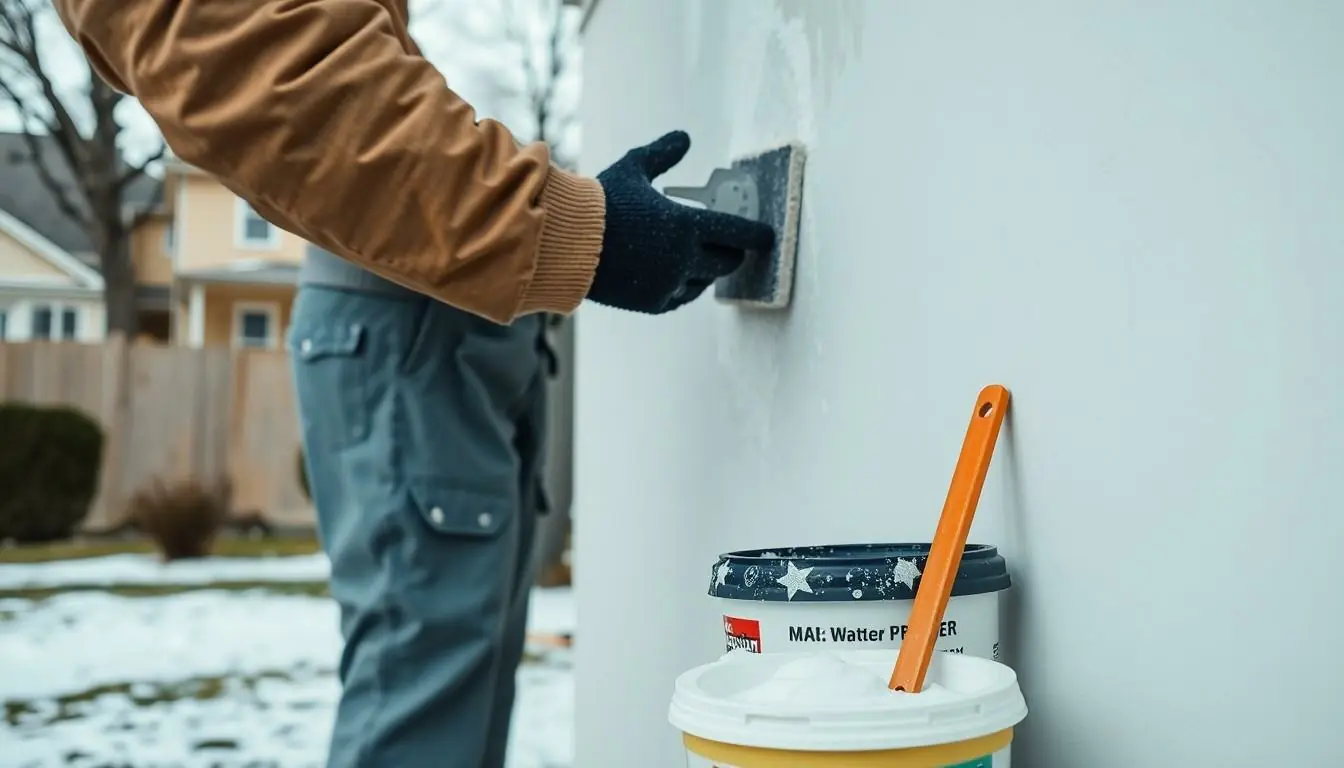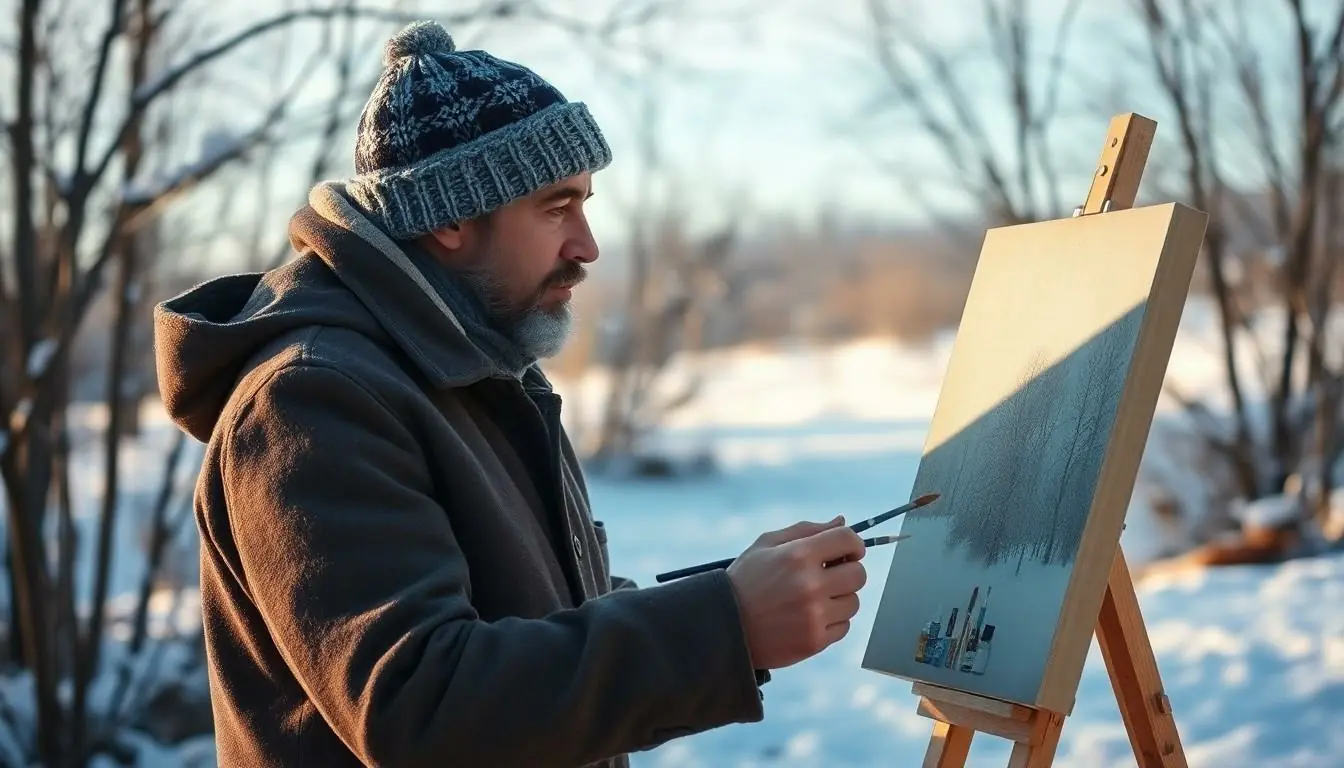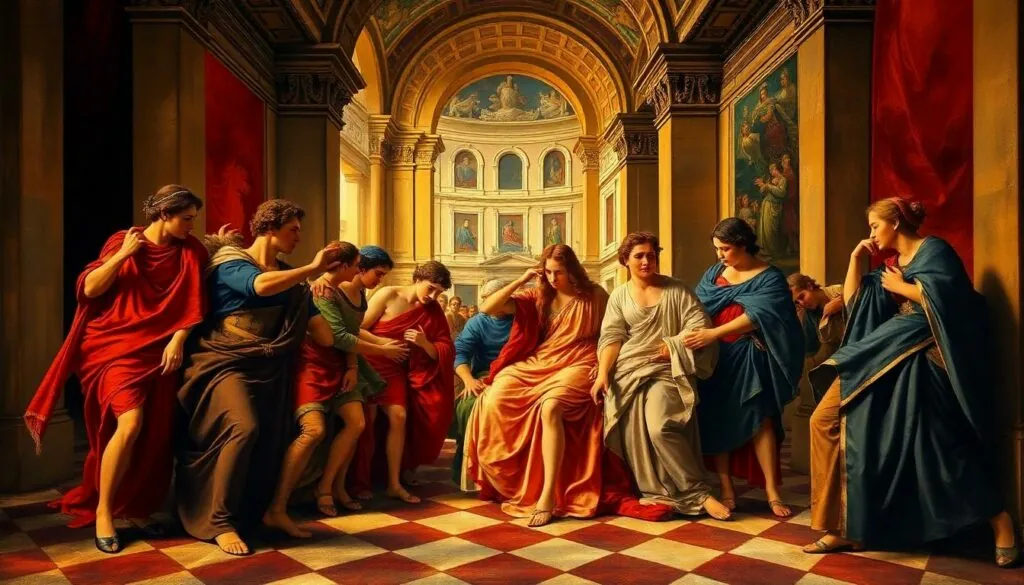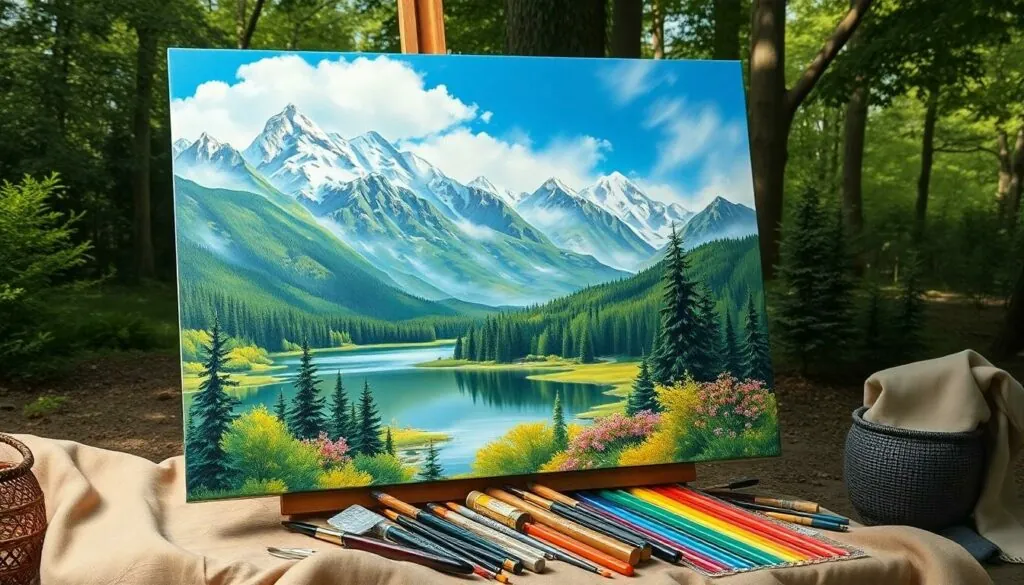As winter approaches, most people trade their paintbrushes for hot cocoa and cozy blankets. But what if the chill in the air could ignite a creative spark instead? Painting in cold weather might sound like a recipe for disaster, but with the right tips and tricks, it can be a surprisingly rewarding experience.
Table of Contents
ToggleUnderstanding Cold Weather Painting
Painting in cold weather demands attention to how temperature affects the materials and techniques used. Understanding these factors ensures a successful painting experience.
The Impact of Temperature on Paint
Temperature significantly influences paint performance. Cold air slows the drying process, leaving surfaces vulnerable to dust and debris. Paint application becomes challenging when temperatures drop below 50°F. Thicker formulations may not spread evenly, leading to texture inconsistencies. Improper curing can result in bubbling or peeling. Choosing the right time of day for painting can also mitigate these effects. Early afternoons, when temperatures rise slightly, often provide the best conditions.
Types of Paint Suitable for Cold Weather
Selecting the proper paint is crucial for cold weather projects. Acrylic latex paint demonstrates flexibility in low temperatures. This type of paint adheres well and dries quickly, even in chilly conditions. Oil-based paints, while slower to dry, can also work when specific cold-weather formulations are used. Certain manufacturers offer paints designed explicitly for low temperatures, enhancing durability and curing speed. Using primer specifically made for cold conditions helps with adhesion and overall finish. Always check product specifications for temperature tolerances to ensure optimal results.
Preparing for Painting in Cold Weather

Painting in cold weather requires careful preparation to achieve desired results. Understanding the right techniques ensures a smoother process.
Surface Preparation Techniques
Prepare surfaces meticulously to enhance paint adherence. Clean surfaces thoroughly to eliminate dirt and dust. Use a suitable cleaner, like TSP (trisodium phosphate), for stubborn residues. Sand rough areas, aiming for a smooth finish that promotes better paint application. Prime surfaces with a cold-weather primer to increase bonding and reduce the risk of peeling. Allow surfaces to dry completely, typically taking longer in cooler conditions. Check humidity levels as excessive moisture can hinder adhesion. Following these steps prepares surfaces effectively for the cold-weather painting endeavor.
Choosing the Right Time of Day
Selecting the optimal time for painting maximizes success. Aim for warmer hours, often late morning or early afternoon, when temperatures rise. Monitor local weather trends to avoid unexpected cold fronts. Overcast days might seem suitable but can lower temperatures further; proceed with caution. Avoid painting during early mornings and late afternoons when temperatures typically drop. Wait for a clear day with mild conditions for best results. Adjusting the painting schedule based on environmental factors can significantly enhance the painting experience.
Techniques for Successful Cold Weather Painting
Successful cold weather painting requires specific techniques to overcome challenges posed by lower temperatures. Understanding and implementing best practices fosters a smoother experience.
Layering and Drying Times
Layering paint can significantly impact the finish. Applying thin layers enhances adhesion and prevents pooling, which often occurs in colder conditions. Drying times extend when temperatures drop, with paint taking longer to cure. Patience is essential; waiting for each layer to dry fully ensures optimal results. Humidity levels should also be monitored, as increased moisture can affect drying times and ultimately the paint’s finish. If possible, users should allow for extra time between layers to avoid potential issues such as flaking or blistering.
Using Heaters and Tents
Heaters play a crucial role in maintaining a suitable environment for painting. Utilizing space heaters can increase the ambient temperature in enclosed areas. Tents protect painted surfaces from adverse weather and allow users to manage temperature and humidity effectively. Setting up tents or tarps creates a controlled space to reduce wind exposure, aiding drying and curing processes. Electric or infrared heaters provide warmth without risking fire hazards in enclosed spaces.
Adding these additional techniques helps painters adapt to cold weather, maximizing the quality and durability of their work.
Challenges of Painting in Cold Weather
Painting in cold weather presents unique challenges that affect both the process and the final product. Understanding these challenges helps ensure a successful painting experience.
Common Issues Faced
Low temperatures often cause paint to dry slowly. Slow drying can lead to issues like improper adhesion, which increases the risk of peeling. In addition, colder weather may cause texture inconsistencies that negatively impact the finish. Surfaces may also become damp, and moisture from the air can impede paint bonding. These factors contribute to a less durable outcome that painters strive to avoid.
How to Overcome Cold Weather Challenges
Choosing the right materials is essential for overcoming cold weather challenges. Selecting paints specifically formulated for low temperatures enhances adhesion and durability. Applying thin layers minimizes pooling and promotes quicker drying times. Looking into proper surface preparation, including sanding and cleaning, ensures that paint adheres well. Using supplemental tools, like space heaters or tents, creates a more favorable environment while working outdoors. Adapting techniques and materials can significantly improve results in cold conditions.
Embracing cold weather for painting can unlock new creative possibilities. With the right techniques and materials, artists can navigate the challenges posed by low temperatures. Understanding the impact of cold on paint application and drying times is crucial for achieving the desired results.
By preparing surfaces meticulously and choosing appropriate products, painters can enhance adhesion and durability. Utilizing tools like space heaters and tents further supports a successful painting environment. With patience and careful planning, anyone can enjoy the rewarding experience of painting outdoors during winter months.



